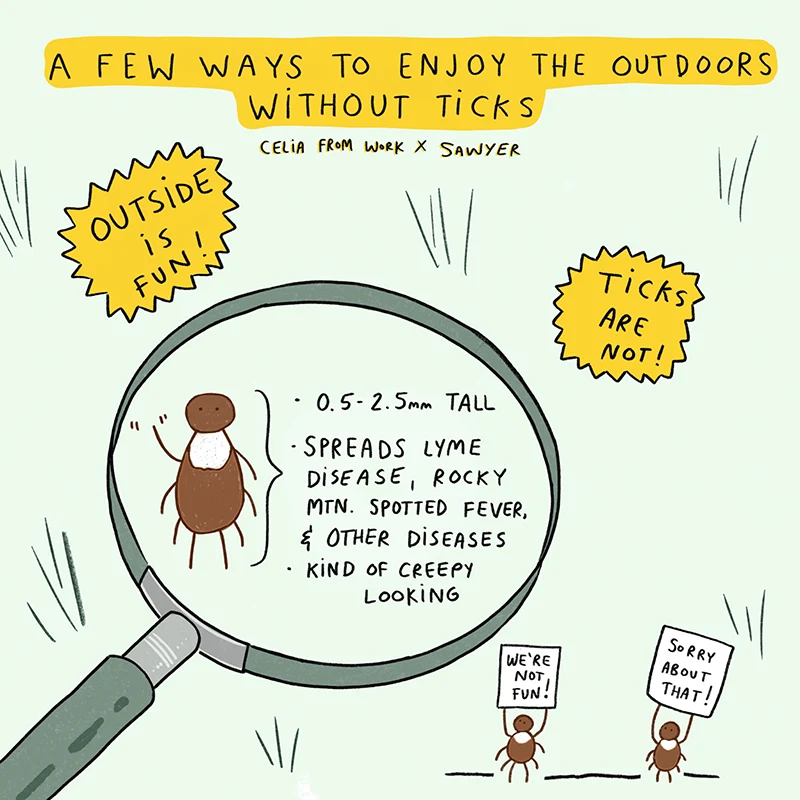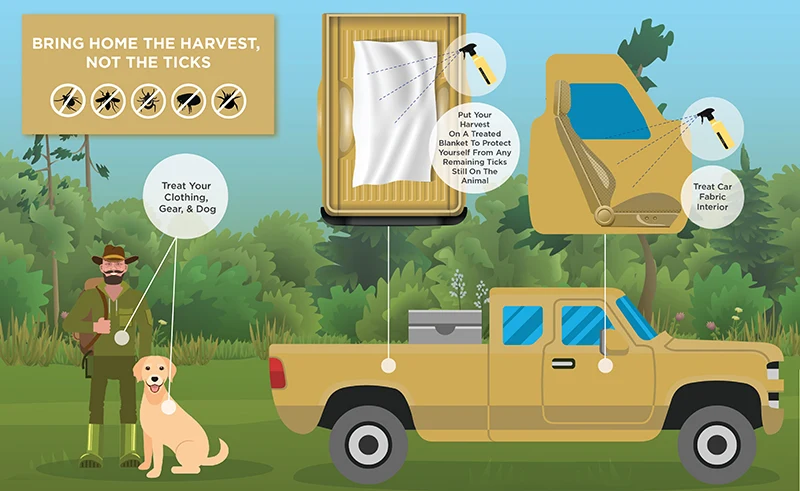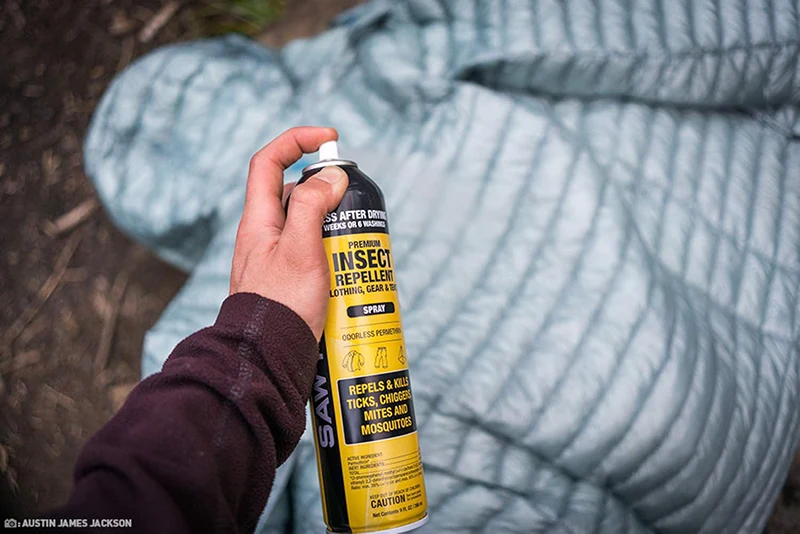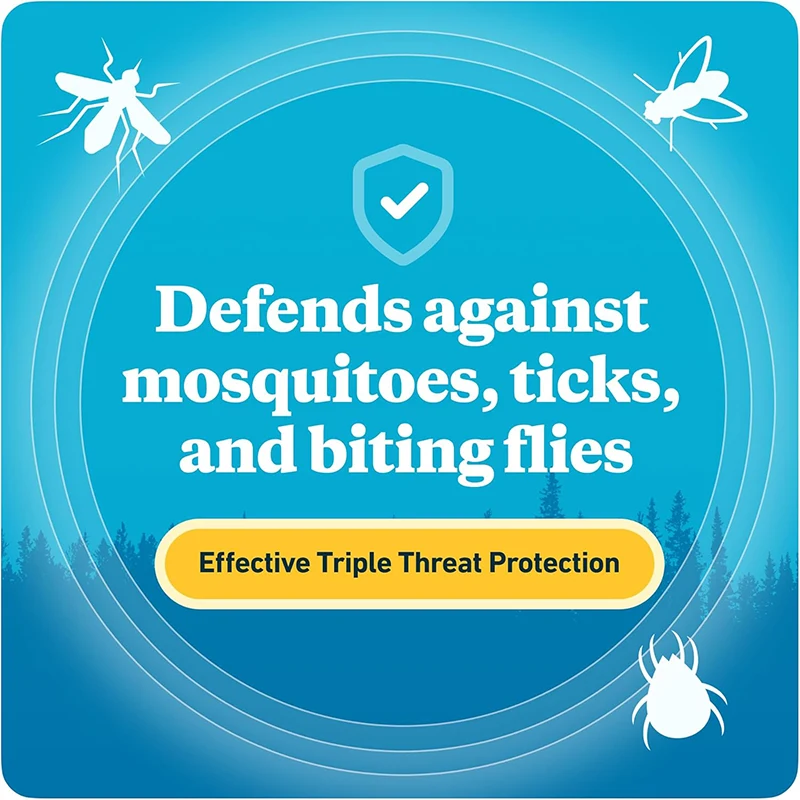Understanding Ticks
Slow Feeders: It takes anywhere from 8 to 24 hours before a tick exchanges enough fluids with you to pass along a disease, so early detection matters. Depending on the species, ticks can transmit diseases such as Lyme disease, Rocky Mountain spotted fever, Alpha-Gal Syndrome, and many others.
Slow Breathers: Ticks only breathe once every 15 minutes. That means we have time to deal with them. It also means that you may find ticks crawling on permethrin-treated fabric or fur, but they may not have taken a breath yet to begin the dying process.
Ticks Senses: Ticks detect body heat and breathing, so layered protection is key. They also like to crawl upwards, both inside and outside of clothing, but can also drop from above onto people passing below branches, trees, or other overhanging vegetation.
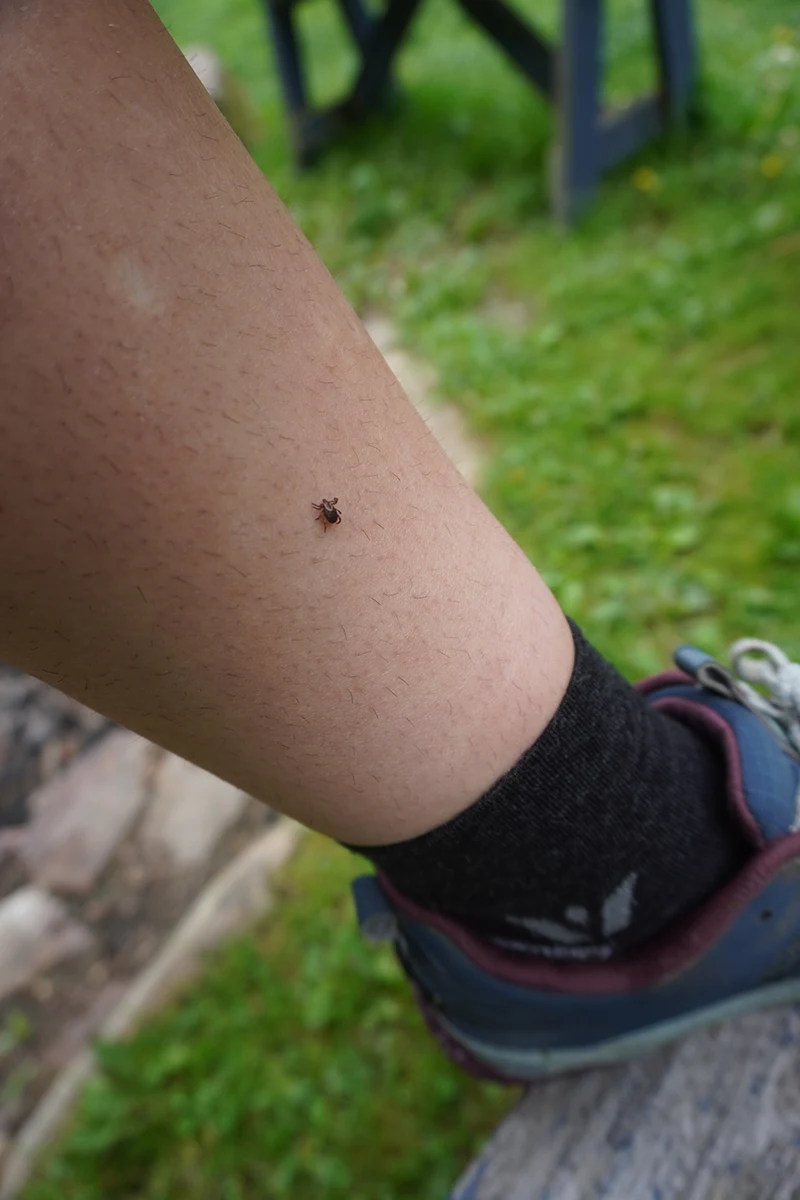
Seasonal Activity and Range: Ticks are generally active when temperatures are above freezing. Peak season is spring through fall, though in warmer regions they may be active all year-round. While different tick species spread different diseases and risk varies by region, ticks have been found on every continent including Antarctica.
Rodent Hosts: Deer, mice, and small rodents drive tick populations. Increased development of previously wooded areas reduces the population of natural predators, resulting in an increase of rodent populations. A single mouse can host over 100 ticks.
Click here to learn more about ticks from a Q&A with tropical disease specialist Dr. Jeri Mendelson.
